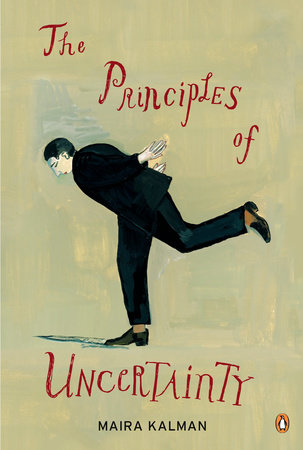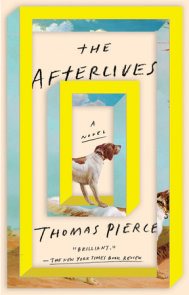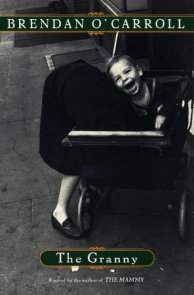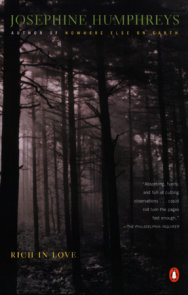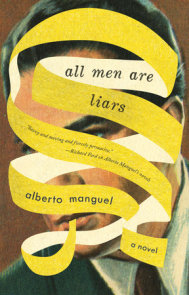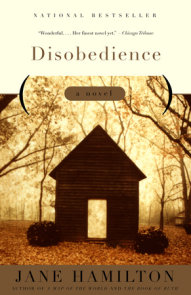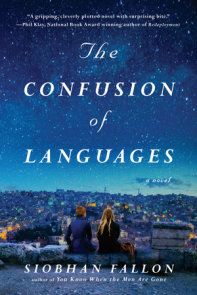READERS GUIDE
Questions and Topics for Discussion
INTRODUCTION
Incorporating illustration, photography, embroidery, and commentary, Maira Kalman’s The Principles of Uncertainty is a collection of the columns she produced for The New York Times highlighting her playful artistic style and distinctive worldview. Kalman finds inspiration in the ephemera of life, and she sees beauty everywhere; her bold, colorful illustrations raise the mundane to the monumental. Much of The Principles of Uncertainty focuses on her ability to use her love for her family as an antidote for her fears and concerns. On a trip to Israel filled with troubling thoughts of political conflict, she is struck by the beauty of her sister standing beneath a bougainvillea. In times of pain, Kalman’s comfort comes from the real rather than the ideal; she believes heaven on earth can be found in her aunt’s kitchen in Tel Aviv, where family anecdotes and honey cake stave off the anxieties of war and the heartaches of history. Many ghosts haunt her thoughts—her father and his unkindness; her mother, who could not marry the man she loved; her literary heroes with their own needs and failures. In one of the most moving moments in the collection, she touches on her great, mournful love for her late husband, Tibor Kalman. Unable to speak in any detail about his death, Kalman finds consolation in the knowledge that Ira and George Gershwin lie near her husband in the cemetery, the two musical geniuses keeping him company in the afterlife.
Despite the heartache that life can bring, Kalman determinedly finds happiness in sources both sweet and surreal. Her curiosity and enthusiasm are contagious, and her readers are drawn into her fun, off-kilter perspective, as are her family; brief appearances by her children Alexander and Lulu show that they have not only inherited their mother’s quirky charm but also her penchant for fabulous hats. Filled with her unique philosophy and personal experience, The Principles of Uncertainty is a testament to Kalman’s wit, compassion, and candor, and her ability to connect with her readers by revealing herself. Kalman wonders, “How can I tell you everything that is in my heart?” and this book is her answer.
ABOUT MAIRA KALMAN
Born in Tel Aviv in 1949, Maira Kalman is a prolific artist who has achieved success as an illustrator, author, and designer. Together with her late husband, Tibor Kalman, Ms. Kalman cofounded the design company M&Co in 1979, and many of their joint creations are now part of the permanent design collection of the Museum of Modern Art. In addition, Ms. Kalman has produced work for Isaac Mizrahi, Kate Spade, Pucci, Sony, and the Mark Morris Dance Company. In 1986, she wrote her first children’s book, Stay Up Late, in collaboration with David Byrne, and she has since written and illustrated a number of popular children’s books including What Pete Ate from A–Z, inspired by the incredible appetite of her own dog, and a series of books starring Max Stravinsky, the millionaire canine poet. Ms. Kalman’s exuberant painting and playful wit has earned her a devoted following not only through her children’s books but also her frequent contributions to The New Yorker, most notably her lively magazine covers. Her most recent publication is the illustrated edition of Strunk and White’s The Elements of Style. Kalman currently lives in New York City, where she teaches graduate design courses at the School of Visual Arts.
A CONVERSATION WITH MAIRA KALMAN
The Principles of Uncertainty—it’s an interesting title. Can you explain it?
It refers to Heisenberg’s Uncertainty Principle, which relates to quantum mechanics and it goes without saying that I don’t understand any of it. The editor in chief of the New York Times op-ed page thought of the title. When I told him what I wanted to write about—life, love, death, confusion, and hope—he felt this was an appropriate name for the column.
As you mention, this book began as a series of illustrations for the New York Times op-ed page. Can you talk about how that came about?
I was happily and thankfully approached by the editors at the New York Times. They just said simply and wonderfully that I should write about anything I wanted to write about. They said the magic words, “Just be yourself.”
How did the book evolve from there?
I took their advice to heart. Each month I explored the things that were on my mind. I allowed serendipity to reveal the theme that was most compelling. I don’t want to say that death was the only thing I was thinking about. I have many lively and happy moments in the book. It was a bittersweet search, so I walked around the city, or traveled around the world and looked at things and said what I felt. The paintings and the writing worked together to tell my story. I would not like to rely on just one or the other.
Where do you find inspiration for your paintings?
Paintings present themselves to me. I see things in vignettes. And when something or someone I see elicits a strong response, I know that I would like to do a painting. Often I cannot speak. Silence and painting is a good combination. It is good to hide and listen to music and a story is told.
Your book illustrates historical events as well as personal family moments—how does this all connect and come together for you?
Personal histories are inextricable from global histories. But in general, I am interested in the personal aspect of history. How do tragedies unfold? How do family histories and identities evolve? My father’s family was killed by the Nazis in a small town in Russia. His sadness never ceased. His tears were always present in my life. His history shaped mine, even though I grew up in optimistic New York City.
What main existential themes do you explore with The Principles of Uncertainty?
Ah, existential themes. I guess all of them. The eternal question, “What is the point?” The dilemma of living. Of finding happiness. Of even trying to define happiness. Of finding trust. Finding out who you are. What to do. Who to love. How to love. It never stops, of course.
Your last book was the Illustrated Elements of Style and before that you published several children’s books. How has your creative process differed between your books?
Fortunately, I don’t have to change my way of working. Perhaps I am a bit less serious with children’s books, but the sense of the absurd is universal and has no age limit. Basically, I look around and tell people what I see with humor and a kind of humanism. I only write about and paint the things I like or even love.
How has your publishing experience differed between projects?
I am usually way into the next project when a book comes out. There is a little bit of déjà vu. And I usually hope that the next project will propel me into a more delightful sphere than the one I was able to imagine before.
You did a spectacular event at the New York Public Library for the Elements of Style, which included the performance of an opera you commissioned for the book. You’re scheduled to do another event there for this book. What do you have planned this time around?
The composer Nico Muhly and I are working on a musical piece with text from Principles. It will include singing and some sort of participation with me. We are asking a lot of questions. Literally. We are setting the questions in the book to music.
What do you hope readers will take away from The Principles of Uncertainty?
I would want a reader to laugh and cry, to think and not think. And to feel a certain vibration of kinship and individuality. So I want all feelings and all extremes and something pleasant in the middle as well.
What’s next for you?
Ping-Pong lessons.
DISCUSSION QUESTIONS







